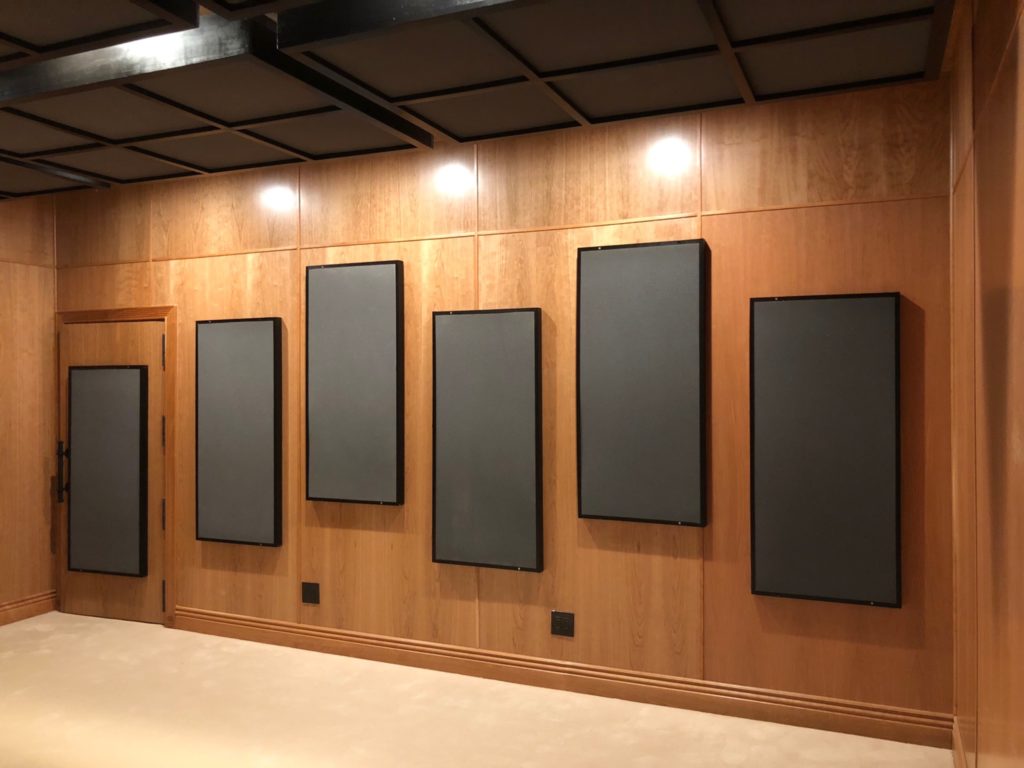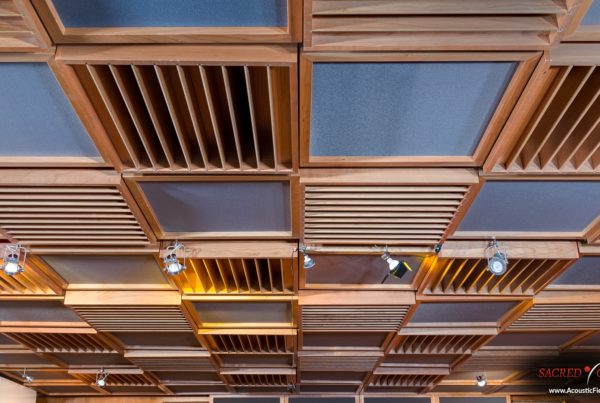Where to place bass traps requires a few steps back into the cause of low-frequency issues. There is so much misinformation out there that the advice given by most companies is completely wrong, misleading, and self-serving. Let’s start at the beginning of this process with real scientific definitions of the issues so you can have an understanding of how the physics work. After you have that understanding, you will be better able to separate fact from fiction. if I had to guess, I would say they are 75% fiction and 25% fact out there. This ratio of fact over fiction makes it difficult for the layman to make an intelligent decision about their room issues. I get calls every day where the customer says I bought this or that and it is not working within my room. Let’s examine a room from the beginning and look at the four major issues we have within a room. We have waves and rays of energy. We have axial, tangential, and obliques modes produced by waves and rays of energy and we have reverberation times which are the reflection from the wall surface areas.

Waves and Rays
Waves of energy represent low-frequency energy. Low-frequency energy is any energy below 100 Hz. Think of waves of energy as ocean waves. They are large oscillating waves of energy that have height and width. A 40 Hz. wave is 28′ long. It is 14′ high. These long and tall low-frequency waves will not fit into our room dimensions. When they don’t fit, they excite the air between the walls in which they don’t fit and produce room modes. Rays of energy represent the frequencies above 100 Hz. They are shorter in length, not as tall, and do not oscillate throughout our rooms. They are more like sunshine. They are straight-line energy that does not roll through our rooms like the ocean waves. They are straight and strike the surfaces of our room and produce reflections. Waves produce room modes or unwanted excess pressure areas between the wall surfaces. Rays produce reflections from the wall surfaces which contribute to higher reverberation times which is another form of room distortion. Where to place bass traps depend on the distances within your room, the room usage, pressure levels that the room is used at, and many other variables.
Axial Modes
Axial modes are areas within our room where wave energy will not fit. They can occur from the floor to ceiling, sidewall to sidewall, and the front to rear of the room. We have all heard them. They are commonly referred to as “bass boom” although that term is neither accurate or descriptive. Axial modes are low-frequency pressure waves that will not fit into the dimensions of your room. It’s like trying to place a size 12 shoe in a size 6 shoe box. You have to bend the tow to fit. That bending is an axial mode. Axial modes are the strongest of all the modes. They cause the most low-frequency energy issues within our room. Axial modes are unwanted pressure issues that cover and smother our middle frequencies.
Axial Modes: http://www.acousticfrontiers.com/room-modes-101/
Tangential and Oblique Modes
Tangential modes are caused by four parallel surface areas. Tangential modes can be sidewall to sidewall and floor to ceiling. They can be front wall to rear wall and sidewall to sidewall. They are produced by the wavelength of energy not fitting into the two parallel planes. They are half as strong as axial modes and must be treated. Oblique modes are between six surfaces or three sets of parallel walls. They are half as strong as tangential. If you treat the axial and tangential modes, the oblique modes are reduced in strength that they are a non-issue acoustically. We must start with the axial modes and work our way through the tangential and the oblique modes.
Tangential Modes: https://www.acousticfields.com/differences-axial-tangential-oblique-modes/

Diaphragmatic Absorbers: https://www.acousticfields.com/product-category/sound-absorption/acda-series/
Six Surface Areas
Since all six surfaces within our room are contributing to unwanted pressure issues, we must treat all surface areas. We must treat the ceiling, floor, both sidewalls, and the front and rear walls. Treating just the corners will not work. How can treating the corners treat the issues caused by the entire wall surface. How can the small percentage of treatment surface area represented by the corners be held responsible for the axial mode the whole wall surface is causing throughout the whole room? The truth is they can not. This is another myth perpetuated by the industry on the ignorant. There is also another psychological component to this corner madness. People usually have nothing in the corners of their rooms so psychologically its easy to say yes to a product where you have space for. Just take it out of the box and place it in the corners of your room where you have nothing else. Just give the company you are purchasing the triangle from and tell them to keep their product.
Low-Frequency Treatment – Carbon Absorbing Wall CAW
We must treat all surface areas of the room. For low-frequency treatment, we can start with the four walls and leave the ceiling and the floor alone. We need 12″ of wall depth space to treat frequencies from 30 Hz. – 250 Hz. We frame out the walls and install our carbon technology between the stud space. We control the rate and level of absorption by varying the cavity depth and the carbon filter depth. We also get to manage room modes every 14 1/2″ within the room. This is the distance between the stud spaces. With our CAW technology, you go after modal issues every 14 1/2″. Building low-frequency management within the walls of your room means you do not have to have a lot of free-standing units taking up valuable floor space. You will also get more surface area to work with building the technology within the walls
CAW: https://www.acousticfields.com/carbon-absorber-wall/

Middle and High Frequencies
To treat middle and high-frequency issues within our rooms, we do not use the inside of the walls. We use the inside walls. We treat those wall surfaces with diffusion and absorption depending on the usage of the room. What you are doing inside the room determines how you build the walls floor and ceiling. If you are recording live instruments within the room the acoustic treatment requirements are different than if you are mixing or mastering. If you are recording vocals the acoustic treatment usage is different than a control or mixing room. You must define usage before treatment. There is some overlap depending on usage type and one room can be used for two usages depending on those usages energy requirements.
About Us At Acoustic Fields: https://www.acousticfields.com/about/








Hello, Dennis. I thoroughly enjoy all of your videos and books and am about to take on the task of building your bass traps, myself. I have some questions: Is it possible for me to break up the ACDA-10 into thirds and get the same effect as building full-sized ACDA-10 or is it better to build the ACDA-10 M and how do I go about building an exact ACDA-10 M; what is the difference in bass absorption when using 2 pieces of foam in an ACDA-10 as opposed to 1 piece of foam and activated carbon pellets; is the ACDA-10 effective sitting horizontally on the floor of the problem area; where can I purchase activated carbon pellets and how much will I need per ACDA-10 or ACDA-10 M? Thank you, so much, for your amazing in-sight and genius into the world of acoustics!
Chad
To note: I will be building your BDA (which I’m guessing is similar to your ACDA-10).
C, If you use our carbon and foam technology, you can achieve the same ACDA-10 performance.
C, The carbon is 350.00 / BDA unit plus shipping inside the United States. You can build the BDA units any size that fits your space requirements. You can alter the width and height. The depth of the unit must stay per the drawings.
Thanks for the informative blog. One basic question from me is the following
Between the top and bottom corners of the room, if one has to make a choice.
Which set of corners would it be better to treat first with corner bass traps.
The top one or the bottom (floor) one and again the one behind the speaker or behind the listener. Thanks
Cover the complete wall. It is causing issues, not the corners.
Looking to minimize the bass transfer from one Commericial unit to the next. We already installed a soundproof wall with green glue, 2 layers of drywall on each side with soundproof insulation. The bass/ low frequency is still transferring so we’d like to explore multiple options you may have. Cell # 650-534-8118
You will have to measure the noise frequency and amplitude before you build a barrier. You did not do that your first time. You used a method that does not work for low frequencies.